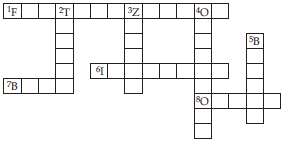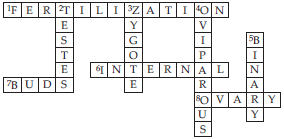Reproduction in Animals (Biology) Class 8 - NCERT Questions
Explain the importance of reproduction in organisms.
SOLUTION:Reproduction is very important for the organisms. The organisms reproduce to produce young ones like them. It carries on their generation. Reproduction is essential f
Q 2.Describe the process of fertilization in human beings.
SOLUTION:Human beings reproduce sexually. In human beings fertilization takes place internally i.e., inside female body. Males eject sperms inside female's body. Sperm and ovum fuse to form the fertilized egg called zygote. During this process the nucleus of the sperm fuses with the nucleus of the ovum thus forming a single nucleus.
Thus zygote is formed with a single nucleus, this completes the process of fertilization.
Choose the most appropriate answer
(i) Internal fertilization occurs
(A) in female body (B) in male body
(C) outside female body (D) outside male body.
(ii) A tadpole develops into an adult frog by the process of
(A) fertilization (B) metamorphosis
(C) embedding (D) budding.
(iii) The number of nuclei present in a zygote is
(A) none (B) one
(C) two (D) four.
(i) (A) In female body
(ii) (B) Metamorphosis
(iii) (B) One.
Indicate whether the following sentences are True (T) or False (F).
(i) Oviparous animals give birth to young ones.
(ii) Each sperm is a single cell.
(iii) External fertilization takes place in frog.
(iv) A new human individual develops from a cell called gamete.
(v) Egg laid after fertilization is made up of a single cell.
(vi) Amoeba reproduces by budding.
(vii) Fertilization is necessary even in asexual reproduction.
(viii)Binary fission is a method of asexual reproduction.
(ix) A zygote is formed as a result of fertilization.
(x) An embryo is made up of a single cell.
(i) False (ii) True (iii) True
(iv) False (v) True (vi) False
(vii) False (viii) True (ix) True
(x) False.
Give two differences between a zygote and a foetus.
SOLUTION:(i) Zygote is made up of a single cell while foetus is made up of many cells.
(ii) Zygote is formed by the fertilization of sperm and ovum, foetus is formed by the repeated divisions of the zygote.
Define asexual reproduction. Describe the two methods of asexual reproduction in animals.
SOLUTION:Asexual reproduction is that type of reproduction in which only single parent is involved. Asexual reproduction takes place by different methods like budding, binary fission etc. Let us discuss these two methods.
(i) Budding: In budding, a new organism is formed as an outgrowth from the parent body. In Hydra, a small bulge appears from the lower part
of the body. This grows into a bud, detaches from parent body and develops into a young Hydra.
(ii) Binary fission: In this type of reproduction, a single organism gets divided into two. This type of reproduction takes place in Amoeba. The nucleus of the Amoeba gets divided into two followed by division of its body, each part getting one nucleus and developing into separate individual.
In which female reproductive organ does the embryo get embedded?
SOLUTION:Uterus.
Q 8.What is metamorphosis? Give examples.
SOLUTION:Drastic changes which take place during the development of the larva into an adult is called metamorphosis. Animals like frog, butterfly undergo metamorphosis.
Q 9.Differentiate between internal fertilization and external fertilization.
SOLUTION:Internal fertilization takes place inside the body of the female while the external fertilization takes place outside the body of the female. In case of internal fertilization sperms are ejaculated in female’s body by the male. In external fertilization sperms are discharged in open.
Q 10.Complete the crossword puzzle using the hints given below.

Across:
1. The process of the fusion of the gametes.
6. The type of fertilization in hen.
7. The term used for bulges observed on the sides of the body of Hydra.
8. Eggs are produced here.
Down
2. Sperms are produced in these male reproductive organs.
3. Another term for the fertilized egg.
4. These animals lay eggs.
5. A type of fission in Amoeba.
